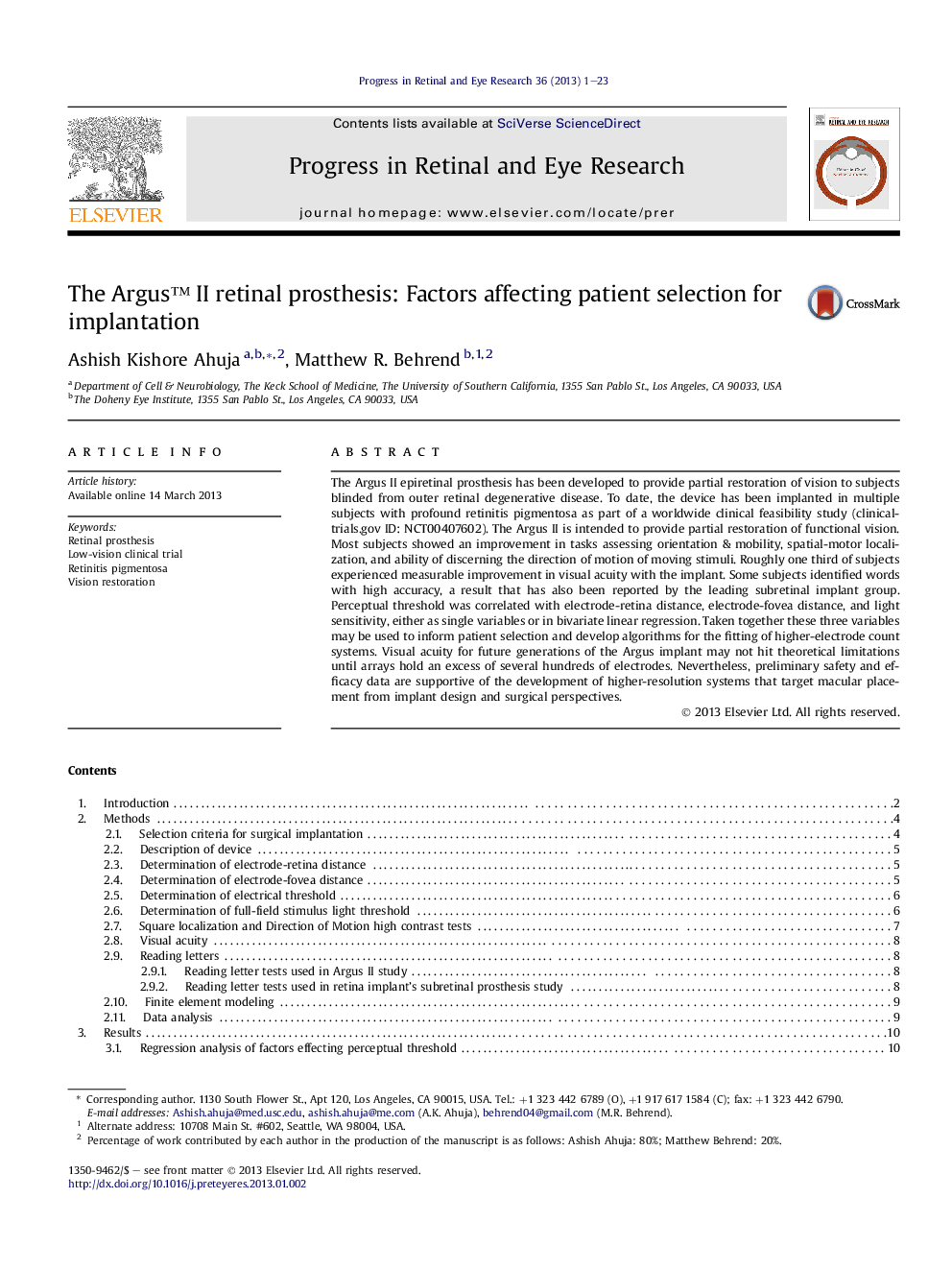| Article ID | Journal | Published Year | Pages | File Type |
|---|---|---|---|---|
| 6202759 | Progress in Retinal and Eye Research | 2013 | 23 Pages |
The Argus II epiretinal prosthesis has been developed to provide partial restoration of vision to subjects blinded from outer retinal degenerative disease. To date, the device has been implanted in multiple subjects with profound retinitis pigmentosa as part of a worldwide clinical feasibility study (clinicaltrials.gov ID: NCT00407602). The Argus II is intended to provide partial restoration of functional vision. Most subjects showed an improvement in tasks assessing orientation & mobility, spatial-motor localization, and ability of discerning the direction of motion of moving stimuli. Roughly one third of subjects experienced measurable improvement in visual acuity with the implant. Some subjects identified words with high accuracy, a result that has also been reported by the leading subretinal implant group. Perceptual threshold was correlated with electrode-retina distance, electrode-fovea distance, and light sensitivity, either as single variables or in bivariate linear regression. Taken together these three variables may be used to inform patient selection and develop algorithms for the fitting of higher-electrode count systems. Visual acuity for future generations of the Argus implant may not hit theoretical limitations until arrays hold an excess of several hundreds of electrodes. Nevertheless, preliminary safety and efficacy data are supportive of the development of higher-resolution systems that target macular placement from implant design and surgical perspectives.
